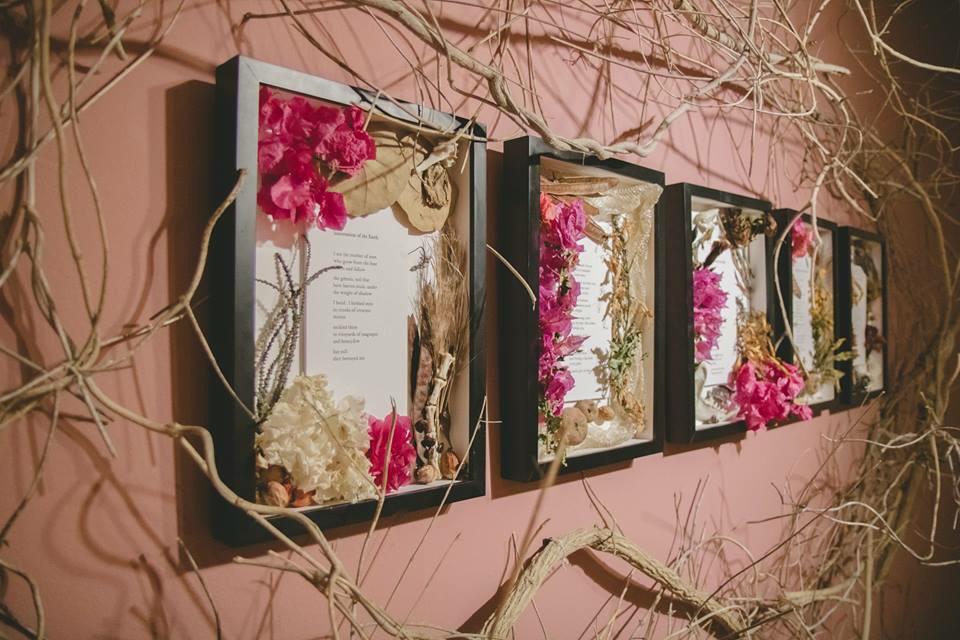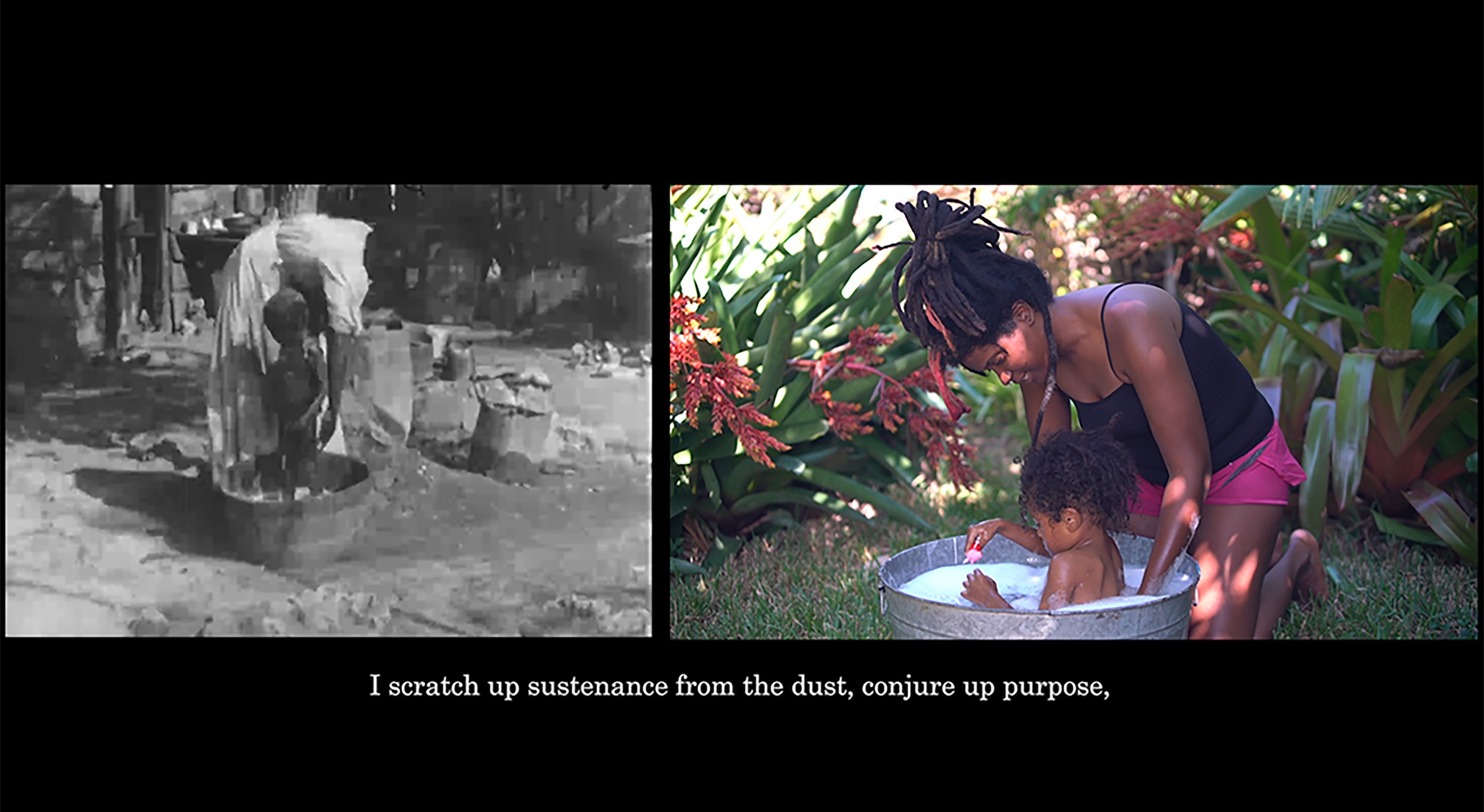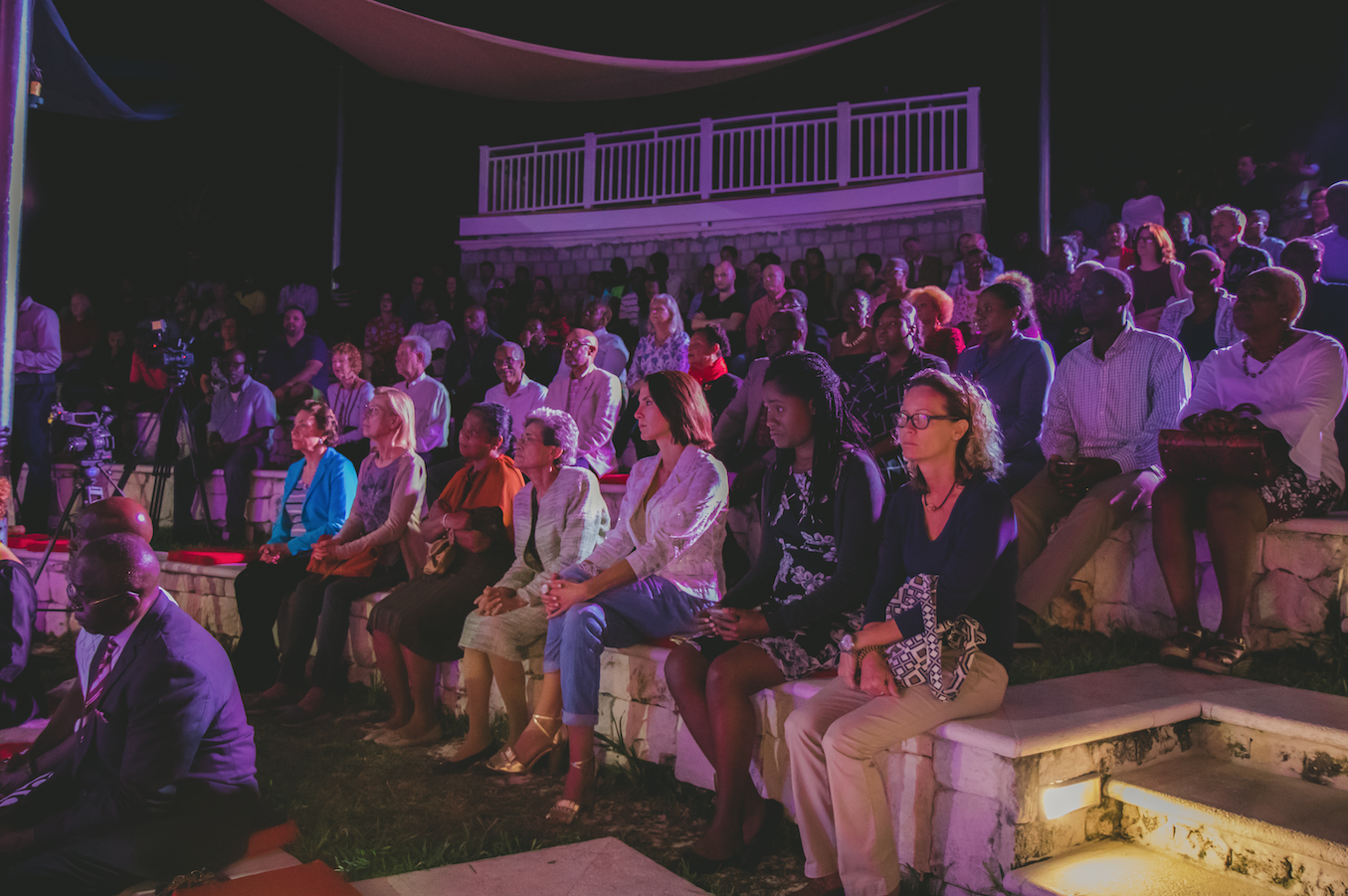Tender Seedlings: Anina and A.L. Major Reflect on Pain and Love in the Bahamian Diaspora
Natalie Willis · 18
Art and language, be it in literature, poetry, or song, have perhaps always gone hand in hand. It makes sense of course, because really what we’re getting down to in artwork or in words is communication – often with one being used to describe or illustrate the other. It’s a happy collaboration, and so too was the collaboration between interdisciplinary artist Anina Major and her flesh-and-blood family A.L. Major. The two came together to produce Seedling (2018) for the NE9: The Fruit and the Seed, a work incorporating cohesively all manner of material – ceramic, wood, digital clocks, a newly sprouted dilly tree, and the words of poetry and phone calls overland and oversea. The work – part artistic laboratory experiment and part poetic becoming – gives us a way to think on the struggles of identity of the Bahamian emigre.
Anina, though she works primarily with clay, through her work she often thinks through the relationships between self and place as a way of cultivating moments of reflection and acceptance. Moving from a degree in Graphic Design at Drexel University in Philadelphia to an MFA in Ceramics from the Rhode Island School of Design (RISD), and some illustrious awards thereafter, it’s clear that she is no stranger to translating the language of the visual from one form to another.
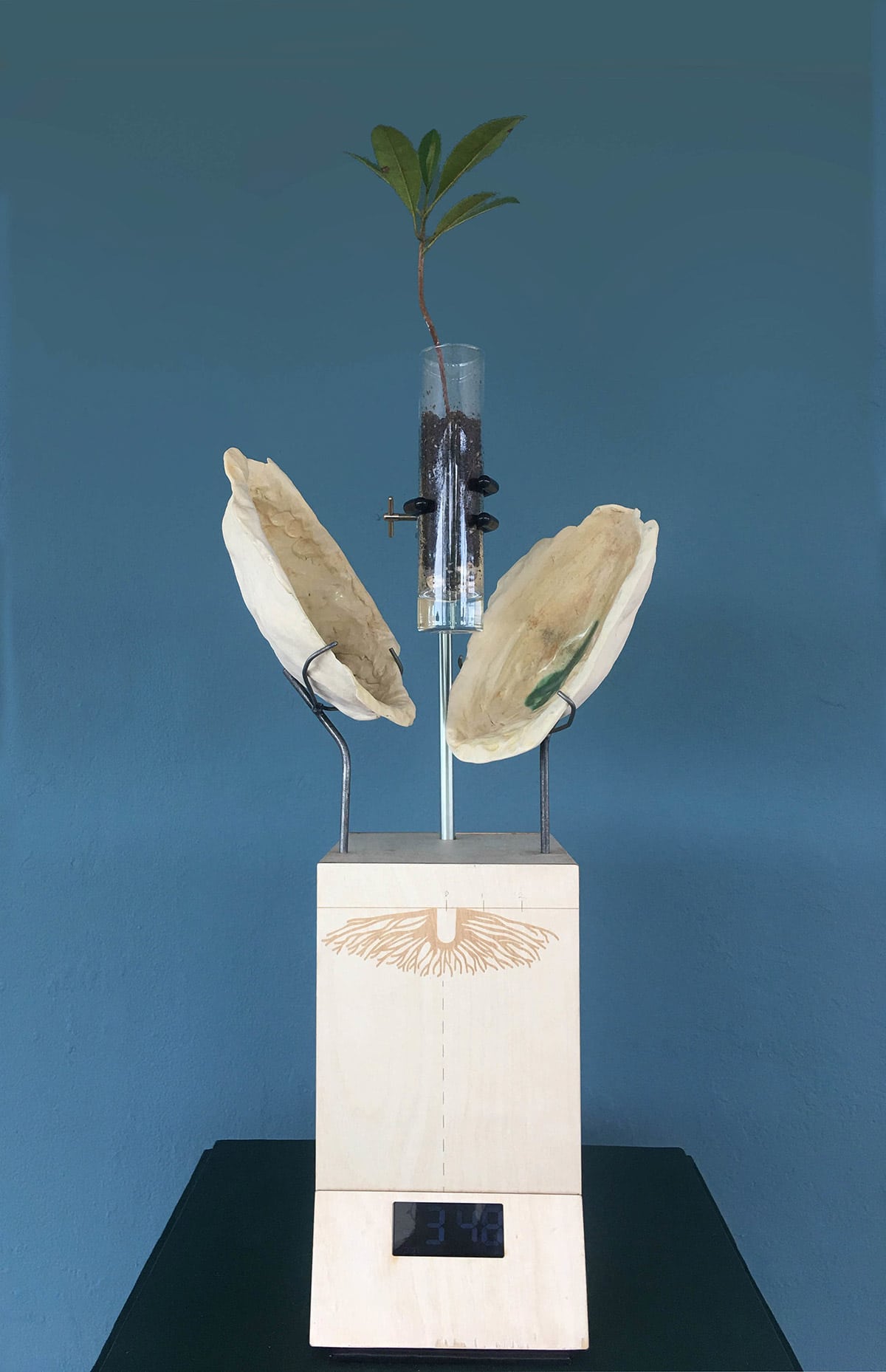
Her sibling, A.L. trained in English and Drama at Vassar College in New York for undergraduate studies before obtaining an MFA in Creative Writing from the Helen Zell Writers’ Program at the University of Michigan – after which they also found themselves gaining some impressive awards afterward. The two had similar journeys over water and land, though the road forked to different paths, and Seedling (2018) begins to get to the heart of this in a way that a lot of work we see within The Bahamas does not so clearly articulate to us. Maxwell Taylor’s series of works on his time living in the US, however, laid the groundwork for this visual language of Bahamians expressing their otherness elsewhere, but Anina and A.L. take up the mantle pointedly and with passionate clarity.
A.L., was, like Anina, born and raised in The Bahamas – though in keeping with the pair made their way to reside in the U.S. on their respective journeys in life. Not unlike the sapodilla sprout from their joint artwork, contained in a test tube with its roots exposed and mobile, the sisters speak to the experience of so many Bahamians and Caribbeans – migration and mobility are part and parcel of our histories and of our current reality. Families from our region reach far and wide, be it looking at the historic family tree or even our present day family structure. The Major duo give us representation for this experience in a very sensitive way, and communication is key to this work.
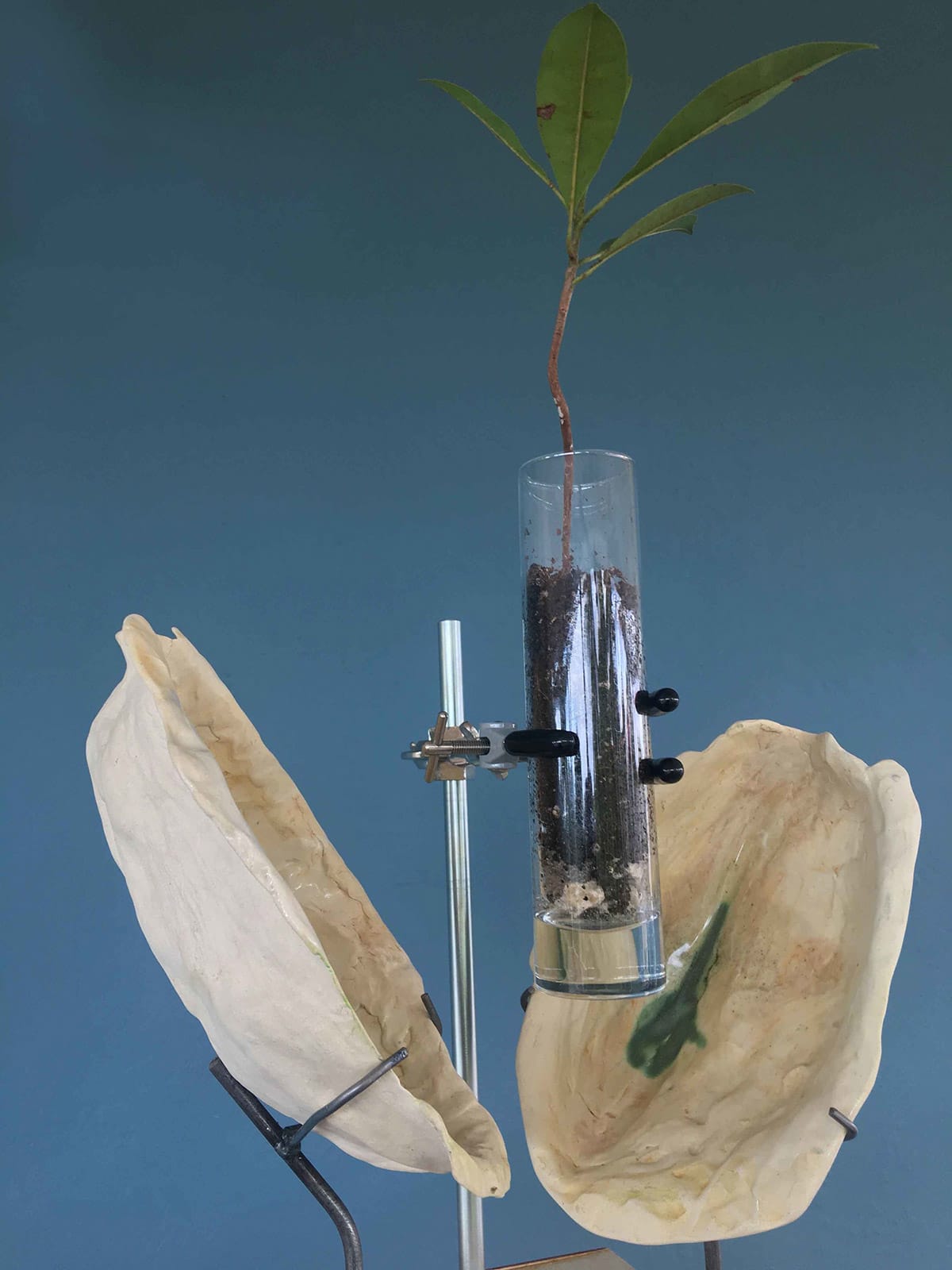
On the nature of the symbolism of roots in the work, for Anina it becomes a clear, and very necessary metaphor: “It’s the experience Stuart Hall speaks of for the region, that we are all natural cosmopolitans in the Caribbean, as we were all brought here from somewhere at some point in time. The fact that the seedling is contained references this idea of living in a transitory state. Living abroad has meant exploring themes of identity beyond the geographic boundaries. To then return home and feel out of place, even though I am from that place. It is as if being decentered, has expanded my ways of thinking through the world, my position in it and what is required to navigate it.”
A.L. shares similar feelings on a lack of connection despite the seemingly obvious “roots” of being born and raised in The Bahamas: “I don’t always feel grounded to be honest, but I feel connected through my friends, family, and absolutely through my work. My debut novel is set in The Bahamas, I’ve been working on it for years, and every time I sit down to write it’s a reminder of home and the stories of home that I think should be told.” And it is these experiences that are so intimate and deeply personal in origin, but so very very ubiquitous for so many, that continue to make these stories and this work relevant to us.
The visual language of native plants (the dilly “specimen” in the test tube, the ceramic forms of coconut shell, the mangrove tendrils engraved into the wooden box) give us the familiarity we need, the visual signs of home. But the arrangement is less familiar, not unlike the experience of being Bahamian and living abroad – it is like home, but also not, the roots are here but are also elsewhere. It feels complicated perhaps, but really it needn’t be so when we consider our own mobility and duality as people. We are a people made of immigrants, and will continue to be (perhaps in spite of government declarations over time that xenophobically claim otherwise), and the frighteningly wonderful breadth of experiences that count as Bahamian are what makes this cultural identity weaving so colorful.
For Anina: “A. L. does wonders with words and I wanted to create an alternate vehicle for those words to be experienced. To do this, I considered our primary mode of communication with family at home and most times it was via voice notes or phone calls. When I first left home, Sunday was the day I would get on the phone once week and occasionally I got mail. Now it is all digital via WhatsApp or email. To deliver the sound in a digital way made sense. Besides the materials being some of my favourites to work with the incorporation of the wood was nod to the woodwork of my father, a nod to lineage or family.” The thought, and very constant reality of, painfully brief phone calls to the ones we love, or letters, or emails – the longing in the audio for Seedling (2018) speaks more to our difficulties with lack of infrastructure (particularly on family islands) for communications perhaps more than the lack associated with longing and belonging.
More than the overarching themes of displacement, home, the question of belonging, was the politicized side of things as expressed by A.L., who deftly weaves in commentary on colonial patriarchal power, womanhood, rebellion, and the rejection of this hegemony and dominant power. The voice recording, which chimes every hour, speaks to being taxed – by Bahamian men, by government, by perhaps more. “Honestly, I didn’t set about intentionally articulating this juxtaposition, these pains and taxations are just built into the bones of my experiences as a Bahamian who doesn’t “fit” in. I struggle so often with reclaiming my own identity because of the ways I threaten or contradict the hetero-patriarchal system that exists in The Bahamas and in this work I wanted to be assertive. I wanted to write into the piece a certain insistence and encouragement to rethink what it means to be Bahamian, and I’m really happy that came alive in the audio piece.”
The concept of home is a deeply complex one. We feel at home not just through family, but through kinship and acceptance within our communities, and moreover through legislature making us feel as though we belong as A.L. expertly narrates this journey in sound in tandem with the way that Anina visually illustrates this conundrum for us.
These parting words might help us tease at the answers a little bit more:
“Sometimes we feel we straddle two cultures; at other times, that we fall between two stools.”
Perhaps the lack of belonging so many of us experience, as migrants or as misfits in our respective communities, comes from falling into the space between spaces, and more importantly, perhaps it comes from a place of choosing rather than embracing our dualities and multiplicities as people. We are Bahamians yes – but we are also a number of other things. We are Bahamians born here and raised here and moved here; we are Bahamians with parents from another land; we are Bahamians without rightful access to citizenship; we are Bahamians who are women, men and all that falls between; we are Bahamians who feel loved back by our country, and we are Bahamians who feel this place is hostile for those of us who do not fit the mold. This is but a fraction of the range of experiences we can begin to categorise and we’ve already run out of boxes – and this may be where the frustration lies, we need not turn to boxes for things they can’t hold, particularly when we’re made of uncontainable expanses of ocean, limestone, and movement.
